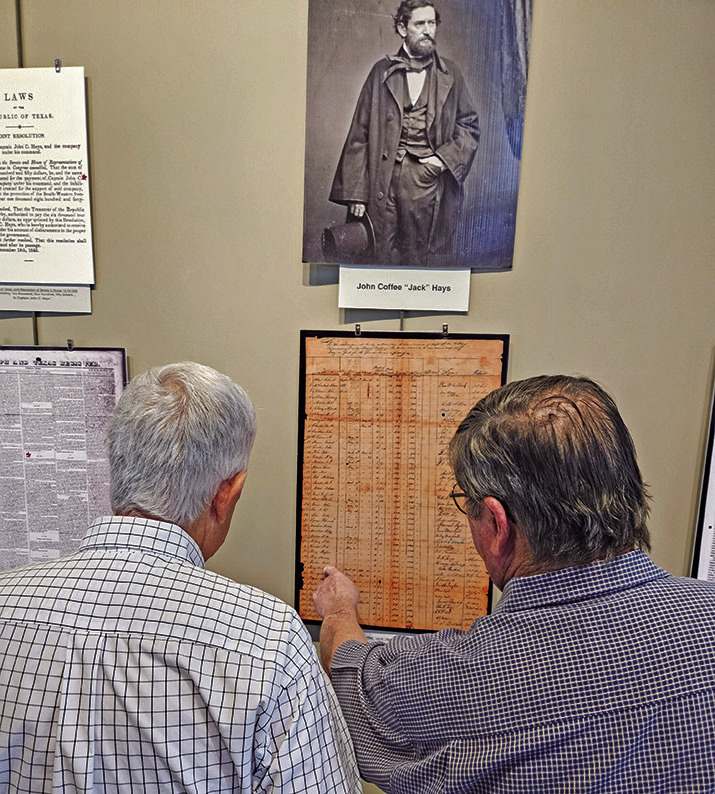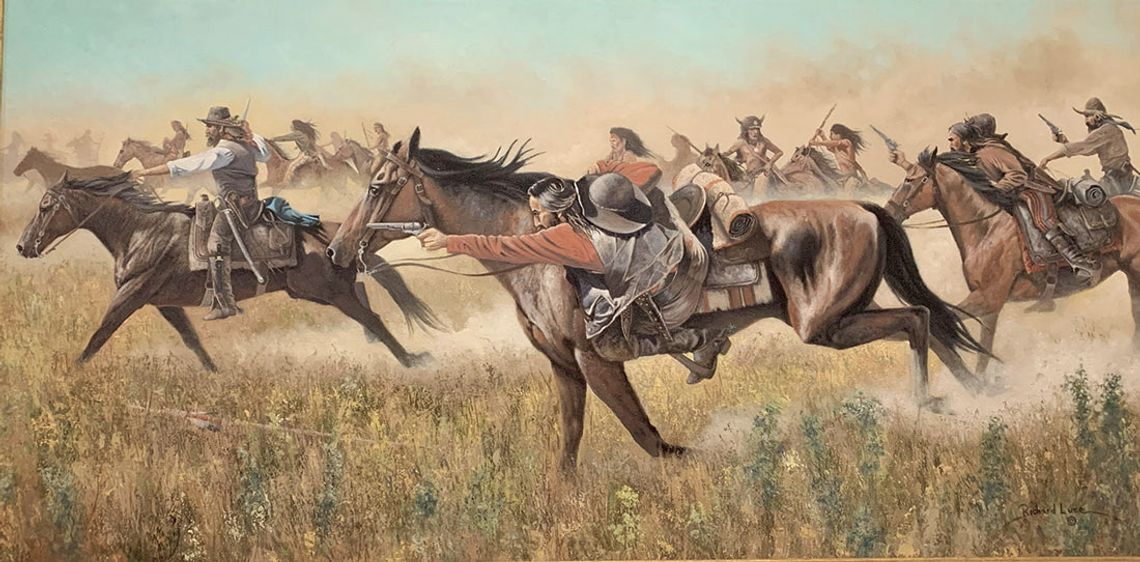GUEST COMMENTARY
BRYDEN MOON
KENDALL COUNTY HISTORICAL COMMISSION
Late in the Republic of Texas era, the 1844 Battle of Walker’s Creek was an unplanned, impromptu confrontation in the unpopulated Hill Country.
The leader of 15 mounted gunmen, John Coffee Hays, sensitive to Republic of Texas President Sam Houston’s diplomatic strategy with the various Native-American tribes via treaties, had managed on his multiday foray into the wilderness north of San Antonio to avoid contact with Indians and keep his lawmen in a strictly “spying” mode.
Yet on June 8th, 1844, during their return trip home from the Pedernales River, Hays’ dodge ran out. While small in number of participants (less than 100), the imbalance of Rangers, only 16 against an estimated 60 to 70 Comanche, Wacoes and Mexicans made the Battle of Walker’s Creek a David-vs.-Goliath moment.
And although the odds were stacked against the Rangers, the outcome in terms of casualties and major injuries was flipped, as Hays reported.
“Loss of Mexicans and Indians, killed on the ground, 23. Wounded, most of them badly, 30,” Hays’ report stated. “My loss was, killed 1, Peter Fosh. Wounded badly, 3, S.H. Walker, R.A. Gillespie, and W.B. Lee. Wounded slightly, J. Andrew Erskine.”
On June 8, the Kendall County Historical Commission and Patrick Heath Public Library spotlighted the Battle of Walker’s Creek in the library’s community room.
KCHC members Bryden Moon and Paul Barwick shared biographical information on Hays and early written accounts of the engagement.
Hays’ courage, attention to detail, coupled with his adaptation of Native American tactics and disciplined training camps, were hallmarks of his leadership and made Hays the perfect commander.
His Rangers practiced enhanced horsemanship and refined their proficiency of shooting from the saddle as a matter of routine through practice; his hand-picked crew of seasoned and dedicated Rangers were the perfect warriors.
More than 100 guests attending the June 8 presentation learned that all of the Texians carried groundbreaking repeating pistols into the engagement: Samuel Colt’s .36 caliber five-shooting Paterson revolvers.

Weapons expert and collector Frank Graves discussed Colt’s early years along with images and replicas of Colt’s weapons. This dovetailed nicely with a special addition to the program; PHPL’s Caren Creech shared a prerecorded interview with historian and author Jim Rasenberger, who wrote “Revolver: Sam Colt and the Six-Shooter that Changed America.”
From both we learned that the Rangers’ maturation under Hays’ leadership, coupled with Colt’s revolvers, made the battle a seminal event with ramifications for frontier security and settlement and Samuel Colt’s legacy.
Colt had lost his Paterson, New Jersey plant where the revolvers were produced to bankruptcy in 1841. Colt, who on that very day (June 8, 1844) was in debt and considered a failed industrialist and inventor, was more than 1,300 miles away in Washington D. C.
It would be over eight months before he would learn about the epic Kendall County event that would help resurrect his fortunes.
The Historical Commission created a Battle of Walker’s Creek exhibit of vintage images, records and documents from the 1840s available to the public in the library’s gallery through July during regular hours.

Guests to the June 8 presentation of The Battle of Walker’s Creek closely examine some of the documents, photos, drawings and documents on display in the Patrick Heath Public Library gallery. Star photo by Jeff B. Flinn








Comment
Comments